Introducing the Hold Exercise in the Retrieve
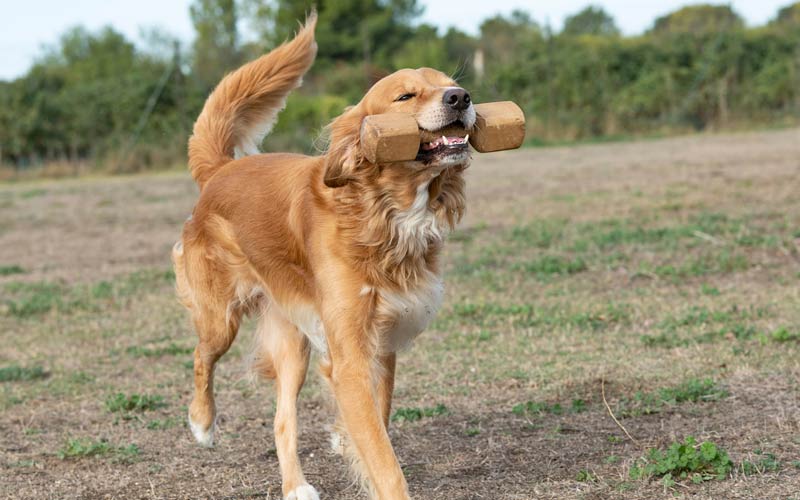
In nearly every dog sport discipline involving obedience the retrieve is a necessary component of the routine, and in many cases highly weighted in the overall score. As with every exercise, a solid foundation is key to developing fast and accurate retrieves. Just as important is the dog's ability to display a quiet "hold" of the retrieve object, free of mouthing, while maintaining correct position (generally in the front position). I hope to share a few of the training tools in my tool box relative to laying the foundation of the formal obedience retrieve applicable to not only French Ringsport, but also IPO (formerly Schutzhund), AKC/UKC obedience, etc.
Over the years I have watched dog handlers fruitlessly attempting to refine a retrieve based on a lackluster foundation, only to discover that throughout the dog's career they are still working on that hold. Often, the dog does not understand clearly in his/her mind where to precisely focus, bobbing it's head back and forth between watching the handler and focusing on he object, awaiting the retrieve command with pitter patter feet. Sometimes those same dogs break early in anticipation out of sheer exuberance and drive, only to tackle the retrieve object and loop widely back to the handler at a fraction of the speed in which they so gleefully ejected from the heel position. Alas, the tell all munching and/or head turning in avoidance (it's MINE!) can be the kiss of death in the points department, and simply radiates of conflict between dog and handler not only from a technical perspective, but by the look of dismay on the handler's face as Fido enjoys his/her antics on the trial field.
On the flip side, a dog may be overly inhibited and display stress. These hard to watch performances may even be rewarded in some venues for precision (better slow and correct than animated and chewing in some scoring systems), despite the dog displaying a lowered head, tight tail set, and doddering trotting pace back to the handler. Let's face it….we don't enjoy watching these dogs slink around the field, particularly when we are on the other end of the leash!
There IS a way of developing a solid foundation for the hold in the retrieve without inadvertently causing a wave in the relationship between dog and handler. This article is specifically targeting those young dogs or puppies who are being freshly introduced to the concept of the hold vs. an older, already established retrieve behavior in an older dog which may require trouble shooting which may be addressed in a later segment. It will also be assumed that the dog has sufficient food drive to find a treat rewarding in a quiet environment (free of distractions).
A little about my training philosophy. First, I am predominantly a reward based trainer at the foundation level. Assuming a dog is suitable for the work and possesses both good food and toy drives, all exercises I introduce are done in a reward based program initially. Does this mean I do not proof or "up" the criteria for a dog, placing more responsibility and therefore inherent consequences in their paws? Absolutely not. I believe that good training should encompass a solid science based program, and I have chosen to refine my training style to set the dog up for success in a reward based program before graduating to any level of correction. By focusing on three of the four quadrants of OC learning theory as it applies to all new behaviors, we can minimize conflict in the trainer's mind, and the dog's understanding of the exercises. Following a few simple rules will make the teaching process much clearer:
- Be sure your dog desires the reward in the specific training area where you will be teaching a new exercise (i.e., Fido should be HUNGRY when presented with soft, meaty high value rewards). Teaching the hold for food rewards on a field that your young dog has had several bite work sessions on will be fruitless, so train smart and carefully select both the reward and the training location. Remember, food kills drive in a working dog in general (food calms whereas a toy stimulates), and the point of this exercise is to create a thinking dog first so as to attain precision, therefore it is desirable in this method to take the dog out of drive in the teaching stage of the hold.
- Teach the initial lessons in the confines of a training building, kitchen, quiet area in the yard, etc. free of distractions or interruptions (those come later at the proofing stage). So often handlers inadvertently set their dogs up to make mistakes by moving in too close of proximity to a distraction too soon in the teaching phases, and the key to laying a reward based program is to set the stage so your dog can be successful.
- Lay a common language of communication prior to starting the hold exercise: condition your dog to a clicker or verbal marker "yes" to take a snapshot in a moment of time at the precise moment your dog has displayed the desired behavior, followed by a high value reward such as frozen Bil Jac, a piece of cheese, hotdog, etc.
- Select your teaching object wisely. Use something your dog is NOT likely to encounter in a trial (such as a piece of PVC pipe) to minimize play drive association. In teaching this method you should NOT make the object desirable, and in fact, it should be something he/she normally would not desire to possess or with which to play. Remember, the retrieve should be taught separate from the hold exercise.
- Don't clump behaviors! The retrieve, done to it's highest level, is a very advanced exercise with a high degree of refinement. Isolate behaviors to their smallest pieces before adding a new behavior. Remember, there are many components to the actual retrieve when strung together: the "capping" or waiting in the heel position, the focal point (look at your eyes or ahead at the retrieve object), heel position (no hovering in the sit position, straightness, and keeping feet firmly on the ground), the actual explosion when told to retrieve, the speed at which to retrieve, the pick up of the object, the speed with which to retrieve, front or presentation position, and alas the actual hold.
Now, to the meat and potatoes of training! Once I have established the above, and assuming you (the reader) will be attempting to tackle this endeavor with a dog that has appropriate drives and stability (food, toy, pack, etc.), we are ready to move on to the teaching phases. I break the retrieve exercise into two main components: 1) the motivational retrieve involving and 2) the "hold". In this segment we will focus on the "hold" exclusively. In the first component ( motivational retrieve of the dog running out, picking up the object, and coming back) I do as an extremely high drive exercise closer to the drive state in bite work. The latter component, the hold, I teach in a very calm, low drive state where the dog is thinking. I believe the dog should view this part of the exercise as obedience. Transitioning from a high drive state (running back to the handler with the object), and flowing seamlessly into obedience (pack drive), can be challenging for many high drive working dogs and their handlers.
First, equipped with my handy dandy treat pouch, clicker, and 6"-8" PVC pipe, I work on simple positive association with the object. I generally do this in a seated position, with the dog sitting in front (need not be a formal front position). Simply show the dog the object, and when the dog displays interest in it I click and reward multiple times. Because all of my dogs learn a "touch" exercise (touching their nose to a designated target), this is an exercise that progresses very quickly. When the object goes away from the site of the dog, so does the verbal praise and food reward. I repeat the process by bringing out the PVC pipe, and when the dog shows interest (simply leaning toward it or attempting a nose touch), I click and shortly after reward. I prefer to utilize a clicker in the initial teaching of the hold exercise, as it is a neutral marker that eliminates any emotional response on the part of the dog that may elicit mouthing of the object, overt wiggly behavior, jumping, etc. It is important to maintain calmness so as to achieve success, and establish several repetitions. Be sure to reward each and every time you click until your dog is looking for the PVC pipe to magically appear from behind your back, etc., giving Fido the opportunity to offer interest or touch to earn his/her reward.
Once the dog is diggin' the site of the PVC, I start to ask for a touch with the nose if he/she isn't already doing so. As with the teaching of every behavior, I do not overlay the command until I have a high degree of reliability that the dog will perform well. I use the 75% rule….when my dog does something 75% of the time or more with physical prompts only then will I precede the physical cue with a verbal. In plain English, only when my dog touches the object the majority of the time will I then name the behavior. In this case I use the verbal cue "touch". Using the verbal cue "touch" I will then ask the dog to make contact with his/her nose in a variety of increasingly difficult positions: up high, down low, behind my back, extended away from me, even placed in a remote locate. Most working dogs will immediately start to stimulate and automatically begin to open their mouths slightly during this portion of teaching and may even bite the PVC. I do not discourage this with any corrections since we ultimately want the dogs to make contact with their mouths and hold. I simply wait for them to offer the new behavior (placing their mouth on the object) and begin naming the behavior "take", quickly marking (do not ask for a duration hold), and rewarding with food each time. This is when you know you are at a healthy stage of offering behaviors.
You will find that most active dogs will quickly take the food and immediately start to make contact with the PVC again. Occasionally, a dog will be reluctant to make contact with his/her mouth, in which case I simply 1) go back to creating a positive association with the object for several more repetitions (perhaps several meals given during this timeframe), and/or by 2) placing a strip of Cheese Whiz or Kong filling on the PVC to override the initial hesitation, etc. The same event marker should be utilized when the dog makes contact with his/her mouth, and rewarded with another high value reward.
Still, some dogs (usually when rushed or unsure about an object of new texture or undesirable substance such as a PVC pipe or metal pipe which may also be used), are reluctant to take the object. In these instances simply sit the dog, or place the dog on a platform, training table, etc. and calmly place the object in the dog's mouth momentarily and click and reward when there is calmness. Remember, you are not asking for duration until the dog willingly takes the object, so there may be a transition phase until the dog realizes the object is a wonderful think to take into it's mouth. Be sure not to say any commands at this point, as the idea is to create a positive association with the PVC in the dog's mouth rather than a negative association to the word "apport" or "bring". Only when your dog is willingly taking the object into his or her mouth 75% of the time or more, even for a wee fraction of a second, are you ready to overlay the verbal cue of "take it", "apport", "bring", etc.
While it may be tempting to make the PVC a prey object to entice the dog to bite it, refrain as much as possible as it negates the calming effects the food creates, and hence a thinking dog in this phase of the exercise. Drive may be injected later in the game in incremental steps when the dog is clear in it's job, avoiding conflict and sloppy work.
When my dogs achieve this status of offering behaviors in the context of teaching the hold, I start to shift the responsibility on the dog just slightly by upping the level of criteria. Now, he/she must WAIT before I ask for the "touch" or "take". This is working now on three small behaviors (wait, touch, take), with the punishment being the withholding of the reward if your dog either anticipates or makes a mistake (i.e., grabbing with teeth vs. touching with nose). When I feel I have a high degree of proficiency in a controlled environment with these three simple behaviors, which may progress as quickly as a couple of sessions, I then move on to asking for duration in the take, which will later be coined "hold".
When entering this final foundation stage of introducing the "hold" exercise (we are not proofing at all during this time), it is important to be ever so patient and minimize distractions so as to set your dog up for success. The "touch" and "take" behaviors require dynamic motion, whereas the "hold" requires a stationary behavior (no chewing, etc.). The more fluent your dog is in the stay or wait commands, the easier it will be to teach the "hold" exercise as it is related to being motionless (static).
Preferably sitting in a chair to eliminate looming over the dog and creating conflict, I first work on creating a positive association to my hand under my dog's chin. I do this by cradling their lower jaw with my hand while also holding the flat collar in the same hand. I do this several times, clicking and rewarding when my dog relaxes, until the act of taking my dog's collar and holding their chin in the sitting position is not offensive to the dog. They will learn to be neutral, and in fact, anticipate a click reward. When this positive association is made, I move to the next step which is introducing the PVC and the "take" cue with my hand under the dog's jaw holding the collar (combining two behaviors). Again, I click and reward several times until the dog is accepting for very short periods of time.
As the dog starts to relax, and I have control of their head and jaw, I ask for the first time for duration. First, just asking for the "take", and when the dog takes the PVC I hold them calmly for just a second before clicking and rewarding. Eventually, I ask for two and three seconds durations. Depending on the dog, your dog may start to resist, in which case you simply remain calm and never correct. The idea is that object in the dog's mouth is a good thing. When you are able to get the dog to hold for a few seconds assisted with your hand under their jaw and collar, you can then progress to the unassisted portion phase of teaching the hold.
Next, repeat the process but quickly and smoothly remove your hand from the collar and chin for a brief second before replacing it again before your dog gets squirrely, and click and reward. Work up to removing the crutch of your hand under the jaw for a couple of seconds. Eventually, your dog may drop the object and expect a reward due to an extended period (a few seconds) of unassisted hold. This is a great learning opportunity for your dog to understand that the reward can and will be withheld(punishment). Simply withhold the reward and start the exercise over. When your dog is doing well and holding assisted about 75% of the time, it's time to overlay the "hold" command.
When your dog is holding the PVC in a seated position, unassisted, for just a few seconds it is time to introduce variety. You might go back to an assisted hold and touch his/her nose with your other hand for a moment, then click reward. From there you might touch their forehead for a moment and click reward. Be creative in touching various contact points of their face, the PVC itself, etc. to create an opportunity to reward your dog. From this stage, repeat the contact points but this time in the unassisted hold. Again, if your dog drops the object they lose the game and you start over. Only when your dog is willingly taking, holding, and accepting contact is it time to repeat the entire process while standing up in the front position.
Keep working on duration, and incrementally increase creativity in the motivational, foundation stage of the hold. I sometimes move my feet about, or touch the tip of the dog's nose, or ask for the hold while sitting cross legged on the floor. I do all of these variations before the dog ever is asked to do a hold on the training field, only incrementally increasing the level of distraction to a threshold where we will have success. When you have put the repetitions in, and your dog is fluent, you can then ask for the responsibility to be shifted to the dog, but not until the handler puts in the effort.
I find that a few minutes a week is a leisurely pace, and it's incredibly exciting to watch Fido's brain work trying to figure out the puzzle to this hold game.




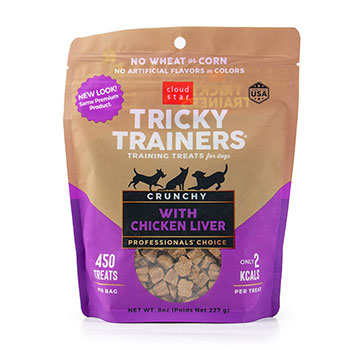
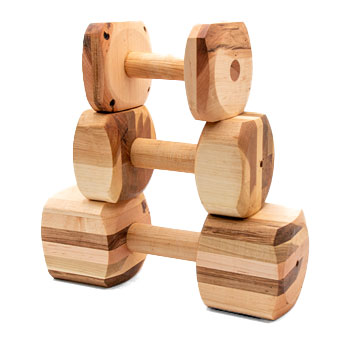

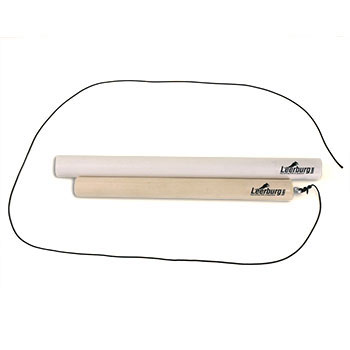
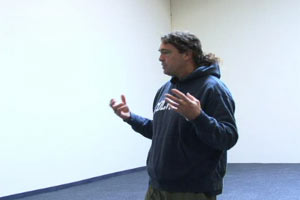
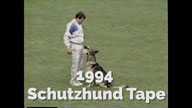
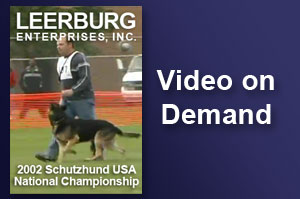
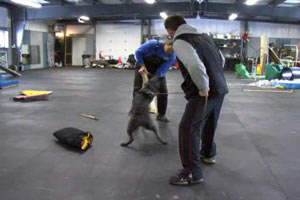
Ask Cindy.